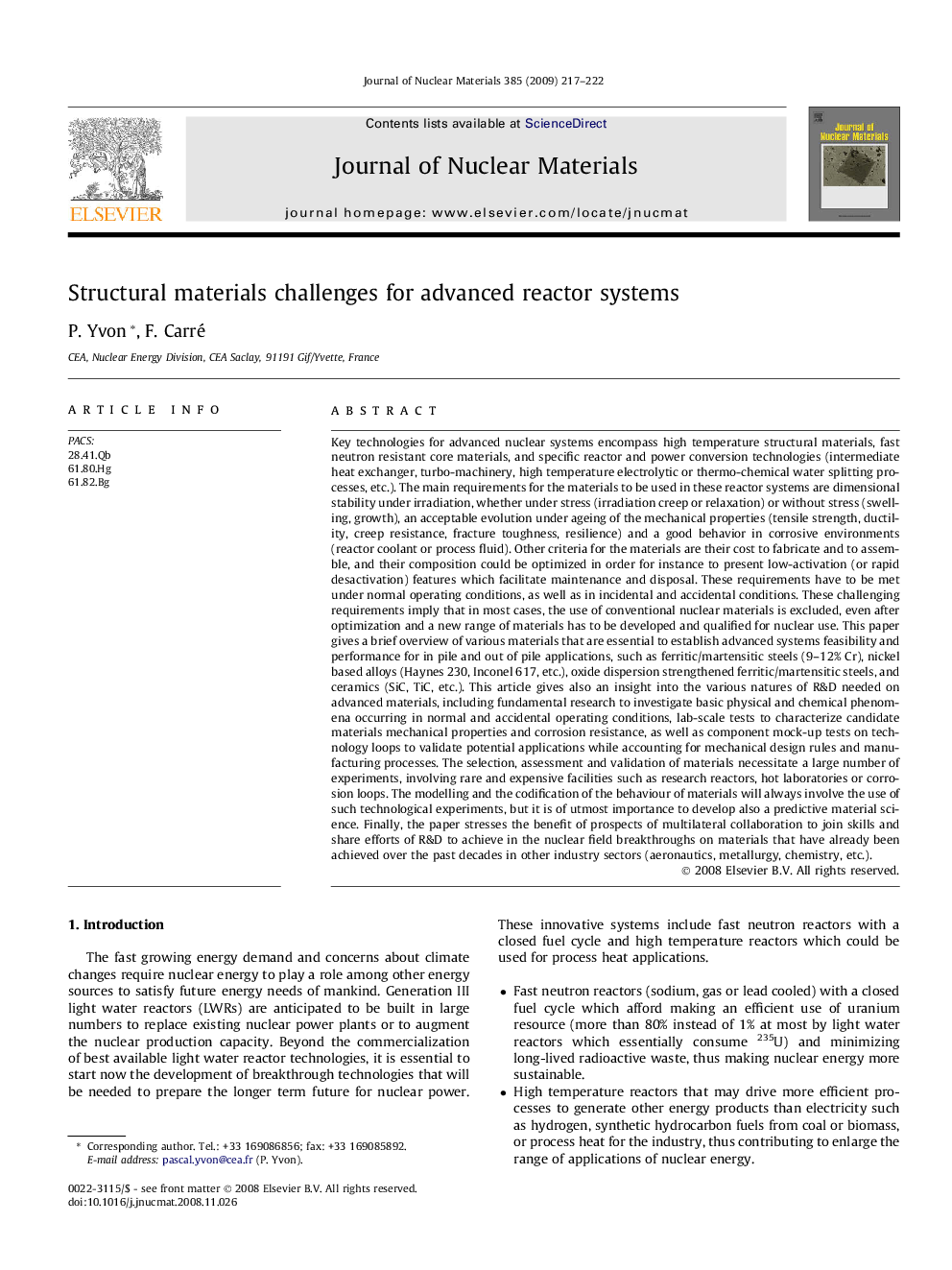| کد مقاله | کد نشریه | سال انتشار | مقاله انگلیسی | نسخه تمام متن |
|---|---|---|---|---|
| 1568703 | 999906 | 2009 | 6 صفحه PDF | دانلود رایگان |

Key technologies for advanced nuclear systems encompass high temperature structural materials, fast neutron resistant core materials, and specific reactor and power conversion technologies (intermediate heat exchanger, turbo-machinery, high temperature electrolytic or thermo-chemical water splitting processes, etc.). The main requirements for the materials to be used in these reactor systems are dimensional stability under irradiation, whether under stress (irradiation creep or relaxation) or without stress (swelling, growth), an acceptable evolution under ageing of the mechanical properties (tensile strength, ductility, creep resistance, fracture toughness, resilience) and a good behavior in corrosive environments (reactor coolant or process fluid). Other criteria for the materials are their cost to fabricate and to assemble, and their composition could be optimized in order for instance to present low-activation (or rapid desactivation) features which facilitate maintenance and disposal. These requirements have to be met under normal operating conditions, as well as in incidental and accidental conditions. These challenging requirements imply that in most cases, the use of conventional nuclear materials is excluded, even after optimization and a new range of materials has to be developed and qualified for nuclear use. This paper gives a brief overview of various materials that are essential to establish advanced systems feasibility and performance for in pile and out of pile applications, such as ferritic/martensitic steels (9–12% Cr), nickel based alloys (Haynes 230, Inconel 617, etc.), oxide dispersion strengthened ferritic/martensitic steels, and ceramics (SiC, TiC, etc.). This article gives also an insight into the various natures of R&D needed on advanced materials, including fundamental research to investigate basic physical and chemical phenomena occurring in normal and accidental operating conditions, lab-scale tests to characterize candidate materials mechanical properties and corrosion resistance, as well as component mock-up tests on technology loops to validate potential applications while accounting for mechanical design rules and manufacturing processes. The selection, assessment and validation of materials necessitate a large number of experiments, involving rare and expensive facilities such as research reactors, hot laboratories or corrosion loops. The modelling and the codification of the behaviour of materials will always involve the use of such technological experiments, but it is of utmost importance to develop also a predictive material science. Finally, the paper stresses the benefit of prospects of multilateral collaboration to join skills and share efforts of R&D to achieve in the nuclear field breakthroughs on materials that have already been achieved over the past decades in other industry sectors (aeronautics, metallurgy, chemistry, etc.).
Journal: Journal of Nuclear Materials - Volume 385, Issue 2, 31 March 2009, Pages 217–222